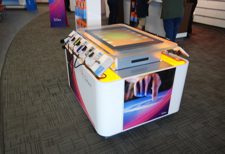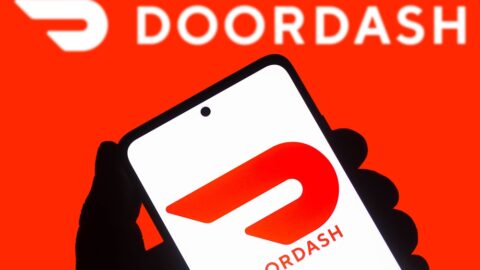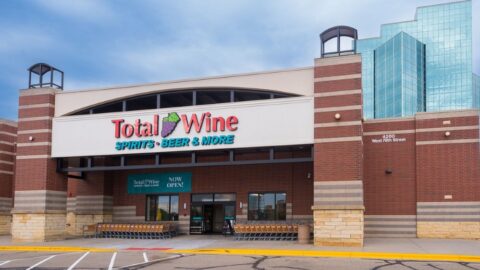AT&T, Virgin Megastores, Bon-Ton and others present at Customer Engagement Conference
Analyzing customer behavior, implementing the latest technologies and focusing on loyalty are three key strategies that will help retailers across industries and geographies keep the best customers and improve top-line sales.
A number of the retail industry’s top executives shared their own strategies with attendees at the recent Retail TouchPoints Customer Engagement Conference, the retail industry’s first virtual trade show. These sessions and others presented at the August 6, 2008 live event, are available on-demand through October by visiting www.customerengagementevent.com.
The three sessions related to the in-store experience each focused on important aspects of reaching the best consumers more proactively:
Investing in the In-Store Experience at Virgin
A roundtable featuring Robert Fort of Virgin Megastores and Andrew Austin from AT&T brought discussion about implementing technologies such as digital signage, traffic counters and loyalty programs and using mobile technology to communicate with customers and employees.
During the session titled “Investing in the In-Store Experience,” Fort described the entertainment chain’s digital listening stations, the introduction of the Virgin VIP Loyalty Program and the retailer’s use of traffic counters. “We have enhanced the store experienced and created a loyalty program while monitoring in-store behavior,” noted Fort, CIO of Virgin Megastores.
Virgin also focused efforts on the back end, that Fort said directly impacts the overall customer experience. A new data warehouse provides real-time sales information to stores and a recently introduced portal facilitates communication between the home office and each of the 10 Virgin destination stores in the U.S. In addition, a new voice and data network is creating a “unified communication strategy in which stores can communicate rapidly with other stores or the home office,” Fort said.
Moving Mobility Forward at AT&T
AT&T is accessing customer profiles as soon as someone enters the store. “When a customer enters an AT&T store they are greeted by an employee using the AT&T Tilt,” said Andrew Austin, director of retail customer experience at AT&T. “The greeter will sign the customer in and while that customer is exploring the technology offerings in the store, that employee is researching information on the customer.” When it’s time for the customer to be served store staff is prepared with individualized information and promotions for that particular customer.
In a partnership with Microsoft, AT&T has become the first retailer to launch Microsoft Surface, “to fantastic success,” said Austin. At presstime the communications retailer had 50 Success tables set up in 13 stores. At the Surface tables, customers can review features of the products by simply placing them on the table.
AT&T’s goals with its in-store technology are to get the customers to “touch the network,” said Austin. “We help them envision what using the services will feel like…through digital signage, touch screen information stations and experience tables.” The company introduced its first Experience store in Houston in early 2007 and now operates 20 similar stores across the U.S.
Analytics for Customer-Centric Marketing at The Bon Ton
Segmenting customer groups and analyzing macro trends has helped The Bon Ton refine its marketing strategy and position the 280-store department store retailer for future success. The Bon Ton is achieving this by focusing on its best customers.“Some folks shop on a seasonal basis or just in one category, such as cosmetics,” explained Mike Hayes, SVP, The Bon Ton Stores, Inc., during his session titled “Customer Centric Marketing.”
“Ultimately our goal is to move what we call the customers’ ‘lifetime value’ to greater heights, improving their transaction profitability and frequency of shopping,” Hayes said. The Bon Ton program is data-driven by macro trends and demographically defined shopping habits. “We first looked at the macro level – economics, competition, top-line sales and the holiday effect,” said Hayes. That information, combined with outside industry research, helped Hayes describe customer behavior. By determining where the best customers were located geographically, The Bon Ton can refined its marketing and promotional messages to reflect that distribution.
During his presentation, Hayes also addressed how the current economy is affecting The Bon Ton’s marketing plans and he explained how other retailers can implement this type of analytics program.
Taking the Customer Loyalty to the Next Level
“Foot traffic is down in stores worldwide,” said Jon Stine, director of the retail sector for Consumer Products at Cisco Systems, “and retail comes in right next to economy class on airlines for customer experience.” With those two strikes against the industry, retailers must focus on their current and best customers to create loyalty that leads to repurchase intent and repurchase behavior, Stine noted during his session titled “Delivering Winning Retail Customer Experiences.”
Retailers must move forward with the latest technology to compete for customers in today’s environment, Stine notes. “Already 10 percent of today’s consumers are texting each other across the aisles in the store.”
During his presentation Stine described three keys to gaining customer loyalty: the brand promise, shopping stages and touch points. He asked: “Can you as a retailer consistently exceed your customers’ expectations where and when it matters most?”
The brand promise describes who you are as a retailer, Stine said. “Eighty to 90 percent of all retailers offer either dependable quality or quick response/service.” The other 10-20 percent, he noted are the trend or cost leaders. Consumers’ shopping stages consist of: awareness of product need, research and decision-making, purchase and the quality of service received. Finally, the touch points relate to different points of contact with the consumer including the store, the Internet, catalog, contact center or mobile phone.
And although research suggests 75-80 percent of customers are “satisfied,” that doesn’t mean they are loyal. “In only up to 40 percent are loyal and IBM suggests that number is 27 percent in grocery,” noted Stine. “So our goal should be to turn satisfied into loyal customers.”
During his presentation, Stine also addressed IT. “Ask your IT people the question: ‘How quickly can we roll out functionality out to all stores?’ And ask yourself how quickly the competition will pass you before you get it out to all stores.”













